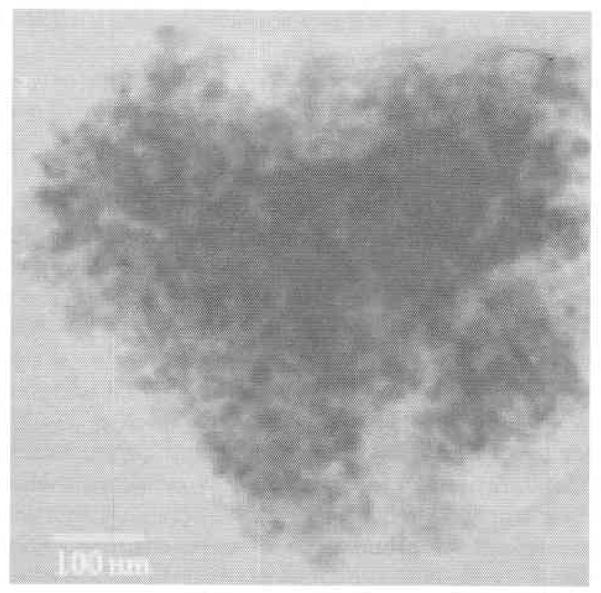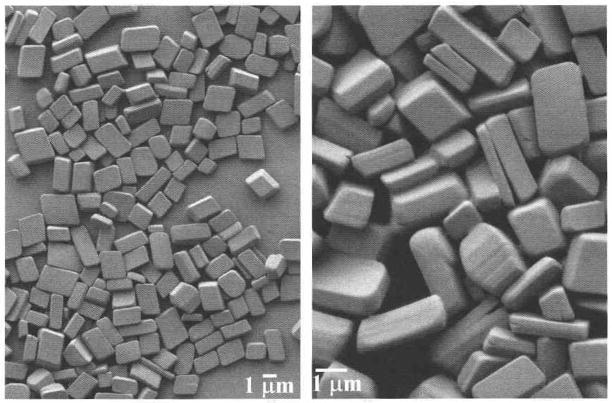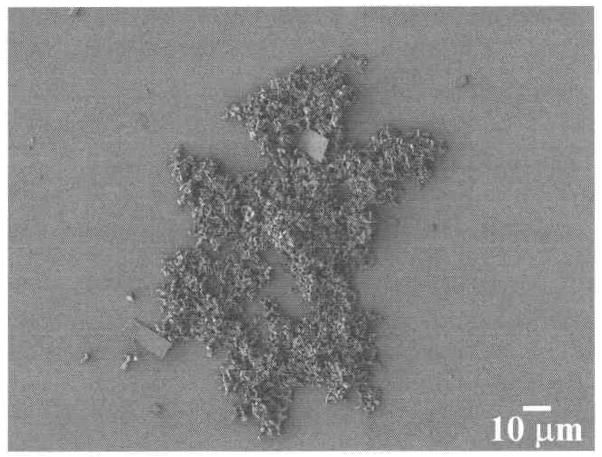Abstract
Micrographs obtained using different instrumental techniques are presented with the purpose of demonstrating their artistic qualities. The quality of uniformity currently dominates the aesthetic assessment in scientific practice and is discussed in relation to the classical appreciation of the interplay between symmetry and asymmetry in arts. It is argued that scientific and artistic qualities have converged and inspired each other throughout millennia. With scientific discoveries and inventions enriching the world of communication, broadening the space for artistic creativity and making artistic products more accessible than ever, science inevitably influences artistic creativity. On the other hand, the importance of aesthetic principles in guiding scientific conduct has been appreciated by some of the most creative scientific minds. Science and arts can be thus considered as parallel rails of a single railroad track. Only when precisely coordinated is the passing of the train of human knowledge enabled. The presented micrographs, occupying the central part of this discourse, are displayed with the purpose of showing the rich aesthetic character of even the most ordinary scientific images. The inherent aesthetic nature of scientific imagery and the artistic nature of scientific conduct have thus been offered as the conclusion.
Keywords: aesthetics, arts, co-creation, creativity, electron microscopy, science
Introduction: where science and art meet
Some people argue that there are no commonalities between science and arts. What they tell us is that all the qualities that typify artistic creativity can be easily discarded before entering the arena of professional scientific conduct. I cannot help but disagree. The common points between the two are, in fact, so many that if one were to begin to carefully outline all of them he would soon realize that science and art may be considered as so tightly intertwined that one without the other could not exist.
For example, although superficial understanding of the scientific imagery may mislead us to think that those are reflections of an objective, observer-independent physical reality, it would not be correct. The products of scientific analyses present, in fact, a strange blend of the physical reality as-it-is and the observer’s assumptions, predispositions and analytical tools. Hence, scientific imagery could be more reasonably regarded as intricately organized metaphors rather than the true images of the described physical reality (Uskoković 2009b).
Thus, considered as pragmatic directives applied in the course of mutual coordination of experiences at the social level, scientific and artistic images can be in their very definition seen as practically belonging to the same roots of the tree of human knowledge and creativity.
Scientific creativity is deeply rooted in the cultural traits, norms and values transmitted and questioned through arts of the actual times. Hence, through promoting values that spur human creativity, irrespective of its objective, arts have a chance to inconspicuously steer the evolution of our society in all of its aspects.
Furthermore, we all know that the pragmatic purpose of scientific research is to enrich the informational world that we inhabit and promote the welfare of human beings. The latter could be, of course, achieved only if we keep in mind that scientific products need to enrich humanity from the inside. This has regularly been confirmed as true. Consider, for example, extraordinary musical devices and computer networks that nowadays enable people to get in contact with almost any kind of music, albeit played in the most distant parts of the world, in a matter of seconds. The potential for an intellectual and emotional growth using technological devices, which are essentially based on scientific discoveries and inventions, has thus soared in parallel with the progress in the informational diversity existing on the face of our planet.
In view of the cultural values promoted through arts standing as both the foundations of scientific creativity and its final aims, the interrelation between science and arts could be seen as forming a closed circle. Neither could they exist one without the other, nor could it be imagined as such. The pragmatism of scientific endeavors and the omniscient influence of artistic expressions are niches from which this inextricable entwinement may be clearly discerned.
Miraculously, this correlation shows us how aspirations to understand Nature naturally promote a boom in the aesthetic potential of human beings. Every path of knowledge thus leads to appreciation of beauty. On the other hand, finding an intellectual and emotional pleasure in encountering human arts has frequently served as a source of intensive inspiration for many productive scientific minds. We might all be aware how some of the greatest scientists of the past oftentimes sought inspiration in arts, be it human forms of aesthetic expression or the fine threads of beauty woven into ordinary natural details and events. In describing the origins of his theory of relativity, Albert Einstein proclaimed: The theory of relativity occurred to me by intuition, and music is the driving force behind this intuition. My parents had me study violin from the time I was six. My new discovery is the result of musical perception’ (Schuller 1980). Louis de Broglie, Richard Feynman, Ernst Mach, Max Planck, Ilya Prigogine, William Lipscomb, Gerald Edelman, Werner Heisenberg, Wilhelm Ostwald, J. H. Van’t Hoff were musicians, Albert Michelson and Walter Thirring were composers, Marie Curie, Otto Hahn, Erwin Schroedinger, Walther Nernst, Roald Hoffmann and Jožef Stefan were poets, Alexander Fleming, Edward Wilson, Louis Paster, Santiago Ramón y Cajal, Lawrence and William Bragg were painters, Robert Holley and Roger Sperry were sculptors, and so on (Hollingsworth 2007). Thus, knowing how to recognize beauty also inevitably leads us to attain higher forms of knowledge. Thereupon, we may be reminded of Yeats’ verses: ‘Beauty is truth, truth beauty – that is all ye know on earth, and all ye need to know’ (Keats 2004). Emerson’s words in his essay Nature are also concordant in their saying that ‘the true philosopher and the true poet are one, and a beauty, which is truth, and a truth, which is beauty, is the aim of both’ (Emerson 2003).
In the revolutionary assertion of what was later to become acknowledged as the principle of beauty in science, Paul Dirac announced: ‘It is more important to have beauty in one’s equations than to have them fit the experiments’ (Dirac 1963). But from what I see, the quest for knowledge and the quest for beauty may not only inherently support each other on their paths, but may turn out to present parallel rails of a single railroad track. Only when they are precisely coordinated is the passing of the train of human knowledge enabled. In one of the most beautiful stories about the relationship between science and arts, Gregory Bateson (1978) depicted arts as a graceful lady who had a habit of using the desolate railroad tracks to dream upon and science as a childish operator who would every once in a while run his trains along these desolate tracks, disturbing the lady in her quiet dreaming. At the end of the story, after their mutual efforts to overcome the conflict, the lady learns how to recognize beauty in the voyages taken and the maps drawn by the train operator, whereby, in turn, the operator promises that he will from there on respect and acknowledge the importance of the lady’s dreaming.
In relation to Dirac’s principle of beauty, I may only add that we seem to be ready now to make a step forward. Not only do we need to devise our equations while being guided by the principles of beauty, but we may eventually find out that the real beauty of our conceptual schemes inevitably takes us towards their more consistent fitting the experience. Although even then, when everything seems perfect, we should keep in mind that the guiding principles of beauty are sometimes so progressive that they might take us too far away, making our concepts appear advanced for the experiential systems that they are supposed to reflect. In that case, we should keep these ideas tightly sealed at the foundations of our heart, hoping that some future explorers will arrive at these hidden treasures and deliver them to the daylights of human knowledge.
The artistic meaning of scientific micrographs
The following micrographs are intended to offer you an insight into how unanimated material structures captured in time with a purely scientific purpose may trigger the sense of an aesthetic awe, similar to the one we awake in facing a painting, a photograph or any other visual art form. As such, these images are expected to present threads that will, in the context of the preceding and following discussion, link the intellectual qualities of science and the aesthetic qualities of arts.
Recently, I had a chance to leisurely stroll around the artistic exhibition of micrographs at the 2008 Materials Research Society Meeting in San Francisco. Amazingly, out of a few dozens of images, not a single one managed to leave a lasting impression on me. In fact, my disappointment in what was displayed there was just tremendous. Even worse, the three images that were announced as the winners of the competition did not seem any better than the rest of the exhibited micrographs. Not only that the artistic quality was significantly low in my opinion (I know that beauty is in the eye of the beholder, but I still believe that objectivity and subjectivity are inextricably mixed in any evaluation criteria, artistic or scientific alike), but many of the images did not present faithful outcomes of the microscopic analyses. Instead, they were redrawn and decorated using various artificial effects, which, in my opinion, should be absolutely intolerable. Furthermore, the decorated images were in most cases redesigned without much aesthetic sense. It seemed as if the purpose had been merely to attract one’s attention, just like spectacular Hollywood movie scenes, although frequently devoid of any artistic meaning, do.
Hence, none of the images shown here were decorated, not even in a slightest manner. They are all as-obtained and ‘organic’, so to say.
An important question concerning criteria for aesthetic assessment can be raised at this point. Many of the micrographs in this exhibition (although, honestly speaking, I expected to see even more) displayed uniform particles in terms of their shapes, sizes and textures. Now, should symmetry, orderliness and uniformity be regarded as the ultimate aesthetic criteria in the artistic appreciation of scientific micrographs (Matijević 2005)? They unarguably are taken as such by the editors and reviewers of the majority of the relevant scientific journals. All materials scientists involved in the synthesis of fine particles are aware that once they obtain a reproducible material composed of uniform particles, the largest part of their research task is over, as these results will be, irrespective of anything else, considered as publishable by the scientific community. Uniform particles indeed carry scientific meaning as they implicitly speak in favor of the uniformity of the material properties and possibly the reliability of its usage. In the modern era dominated by the music of repeatable beats, may be particle uniformity may carry an additional aesthetic meaning. But recall that in the living domain, an extreme uniformity may be the sign of a pathological state. For example, malignant cells are typified by their uniform morphologies and morphogenetic activities, whereas healthy tissues and cell cultures are composed of entities naturally diverse in shape and function. On the other hand, the particle uniformity indisputably speaks not only about the mastery of their designer, but about the mastery of Nature, the underlying designer, who has provided matter with the intrinsic propensity to be tailored in these fabulous forms. And we should never underestimate that by producing more of the original uniform matter, we are not making the world a more uniform place; we are building its diversity instead. However, the real artistic value may be still more connected to scientific images that do not expose uniformity of matter (or living systems alike, as many marvellous images of biological entities and processes may tell), but rather focus on the classical attributes of beauty. This may be one of the lines along which scientific and artistic assessments of quality have been incompatible so far. Nevertheless, my aim here is to present more of the latter, classical aesthetic features rather than monodisperse particles. You can find a plenty of uniform systems in practically any well respected materials science journal; so now lay back and enjoy in what is about to come. In the end, I believe it requires a bit of wit and imagination to make images like these fit ordinary scientific papers, as I have managed to do on many occasions.
I cannot claim, however, that these images were born in a completely accidental manner. It is worth recalling a movie about movies, the Lisbon Story (1994), directed by Wim Wenders, in which one of the actors, hiding from the camera throughout most of the time, decided to give up on any form of art that involved human creativity, and instead walked around the city with a camera tied to his back, randomly capturing images of the surrounding world.
However, a detailed exploration of the elementary phenomena of experience would lead us to acknowledge that every perceptive detail of human experience can be regarded as the product of the dialogue between the subject’s deepest cognitive foundations and the ontological foundations of Nature. In other words, both us as the observers and the physical world in which we are immersed are involved in outlining the world as we see it. The fact that it is the encounter of human cognitive predispositions and anticipations on one side and the qualities of the surrounding physical reality on another that defines the products of human perception and reflections indicates that every creation in this world has to be a form of co-creation. The idea of co-creation is thus meant to present a middle Way between the philosophical traditions of constructivist idealism and objectivistic realism (Uskoković 2009d).
Hereafter, each detail of our experience and each one of the images ‘accidentally’ captured by the camera of our Lisbon friend could not be considered as completely detached from the nature of us as observers. Each one of them tells us something about the essence of their creators and interpreters. For, the whole life in each one of its moments can be imagined as an encounter between the intrinsic questions that we as cognitive creatures carry within us and the subtle and enigmatic responses of Nature thereto.
Thus, all the images that follow could not be regarded as accidentally appearing along the pathway of my professional research. I believe that they have marked the subtle way of Nature letting me know that I was on the right way. Sometimes these images were not only aesthetically pleasing. They were scientifically important too, so that they could be included in the published research reports (in those cases, only implicitly inviting the readers to appreciate their aesthetic appeal). And yet, many of them were left aside for a compilation like this.
Three different high-resolution microscopic techniques were used to produce these images: Scanning Electron Microscopy (SEM), Transmission Electron Microscopy (TEM), and Atomic Force Microscopy (AFM). There is also a copy of a fresco included in this collage of pictures. The references placed in the figure captions denote the articles from which the image was reprinted with permission.
Collage of micrographs
This is how it all started. This is the first micrograph I published during my first professional research engagement at Jožef Stefan Institute in Ljubljana, Slovenia (Uskoković and Drofenik 2003). The heart in this TEM image is formed by agglomeration of thousands of nanosized particles of nickel-zinc ferrite magnetically attracted to each other. If these nanoparticles were kept positioned at some distance from each other, the resulting material would be of superparamagnetic nature. But here, composed of agglomerated particles, the material behaves as a giant magnetic particle, firmly anchored in an antiferromagnetic state. Thus, may be what our hearts are presupposed to become is exploding from this tight unity of their emotional ingredients into a supernova that would bless the surrounding world with its light at every moment of our existence. Once our hearts transform into such a force that selflessly strews others with an enlightening beauty, we can be reminded of the Biblical verses: ‘Except a corn of wheat fall into the ground and die, it abideth alone: but if it die, it bringeth forth much fruit’(John 12:24).
The contours of a sitting maiden in this TEM image are also unexpectedly formed by agglomeration of nickel-zinc ferrite nanoparticles. As the image turned out to be both aesthetically pleasing and scientifically significant in the context of interpretation that I consciously weaved around it, it secured its place in a serious scientific publication (Uskoković, Drofenik and Ban 2004).
This ball appears as if being held by someone’s hands and thus may remind one of the imaginary ball a Tai-chi master uses to balance the gentle flow of his movements. Although it seems soapy and amorphous in this TEM image, this sphere is actually made of lanthanum, strontium and manganese oxalates (Uskoković and Drofenik 2006).
These perfectly shaped cookies are actually cholesterol crystals (Uskoković 2008a). Under these conditions, the surface charge density on the individual particles is large enough to prevent their natural tendency to aggregate and cause the formation of pathological cholesteric deposits, including gallstones, kidney stones and atherosclerotic plaque. Despite its popular association with disease, cholesterol is an essential molecule for maintaining a healthy metabolism. It is the most abundant sterol within our bodies where it is involved in numerous tasks, ranging from serving as a precursor for the synthesis of vitamin D3, bile acids and steroid hormones, to playing a role in maintaining a proper flexibility of the cell membrane. The scientific importance of these SEM micrographs lies not only in providing evidence that cholesterol crystals can be made resistant to aggregation and lastingly stable in the dispersed form, but shows that their eventual aggregation occurs specifically in a face-to-face manner (Uskoković and Matijević 2007).
This joyful clown with his hand stretched and funny nose looks as if it is inviting us to step upon the SEM sample substrate and engage together in an enchanting play. It is also composed of tiny, brick-shaped cholesterol crystals, similar to the toffees shown in the image above.
These unusual morphologies were obtained from mixtures of cholesterol and carboxymethyl cellulose (CMC) self-assembled at a water/hexa-nol interface (Uskoković 2008). Upon their drying, thixotropic phenomena take place and the corresponding bubbling effects produce unusual structures visible on these SEM images. Occasionally they separate from the initial plastic composite films and seem as if floating in space, like the sea-cucumber-shaped entity.
In this pair of SEM images, we see a single egg-shaped entity with the same chemical composition as the entities shown in the previous figure (cholesterol/CMC). As the intensity of the electron beam increases with the zooming in, the entity bursts, leaving a hole on its surface and revealing the empty interior. The possible biomedical significance of the images shown in this and the previous figure lie in the ability of the water-soluble derivative of cellulose, CMC, to subdue the tendency of cholesterol to adopt elongated crystal shapes and thus possibly alter its pathological tendencies towards layered aggregation.
The dolphin and the human head in this AFM image of amelogenin nanospheres deposited on a glass surface make an association of some mystical beach at night.
What resembles the spiny structure in this TEM image are, in fact, aligned carbon particles formed at the place where a rod-shaped cholesterol crystallite was positioned prior to the microscopic analysis. Under the intensive force of the electron beam of the measuring device, the cholesterol crystal melted, chemically degraded and turned into tiny dots of carbon particles (Uskoković 2007). Still, it appears as if there is a half-face forming behind the spiny structure, carefully contemplating this phenomenon of alignment behind a strange veil.
The 5 × 5 μm image in the middle was the first one I obtained during an AFM imaging session at UCSF the morning after my Mom left for home after a short visit across the Atlantic Ocean. As Nature responded to tender emotions induced by this temporal parting, She gave me this wonderful ‘sign’ as a gift. The analyzed sample consisted of hydroxyapatite crystals interspersed within a silica matrix and preferentially oriented so that only their (001) faces face the observer. This image immediately reminded me of an icon depicting the Holy Mother hanging on the wall of our family house in Belgrade, Serbia, the photograph of which is shown on the right. As my Mom taught me, as harmony dwells in our house, one could see the Holy Mother’s cheeks reddening. Verily, the cheeks of our house-guarding icon seemed to blush miraculously as peace would bless our home. As for this sleeping beauty’s cheeks made of silica glass and hydroxyapatite, they can be seen glowing with a dazzling luster. Left of it, I place the Byzantine icon from the twelfth century, Theotokos of Vladimir, in which the Christ child is showed sweetly snuggling up to his mother’s cheek, nicely matching the tone and metaphor of the microqraph in the middle.
AFM images on the left and right are of samples composed of amelogenin nanoparticles deposited on top of a substrate composed of hydroxyapatite crystals interspersed within a silica matrix, whereby the image in the middle is an SEM micrograph of cholesterol/CMC composite.
Captured here are colonies of gram-negative bacteria residing on a mineral surface. The amplitude AFM image on the left is reminiscent of lighted extraterrestrial colonies approaching a planet, the features of which are visible in the background. The phase contrast AFM image on the right shows wavy and shadowy patterns, resembling a sunlit stony riverbed.
The outline of the dark figure on the left appears as if depicting an enlightened Buddhist goddess in a kneeling posture. A tiny hailer could be discerned as placed beside her. A broken and warped, and yet hilarious, buffoon-like smile in the middle looks as if it leaped out of an abstract surrealist collection of paintings, whereas the figure on the right resembles an infuriated, devil’s face. The samples on the first two AFM images are again composed of hydroxyapatite crystals interspersed within an amorphous sandy matrix, whereby the sample captured on the third image comprises a blob of denatured human amelogenin.
This AFM micrograph of clinched hydroxyapatite crystals, the last one in this collage, is named so because it was captured as a ‘Take One’, especially for this occasion and in a completely ‘random’ way. Despite the seeming randomness of the capturing procedure, I still believe that there are reasons to consider this image as a piece of art, just like all the others. And if it may be regarded so, then there can be no reason from now on to discard by default scientific images as inherently not artistic.
Final words: science and arts holding their hands together
At the end of the Lisbon Story, the main character managed to convince the friend that committed himself to randomness in art to get back to the old track and devote himself once again to making conceptual, well structured and deeply moving pieces of art. The friend accepts this idea and that is how the movie ends. After all, the evolution of life is crucially dependent on the proper interplay between the human creative efforts to order and functionalize the surrounding material structures on one side, and the tailoring potential of matter, brought about by the very Nature on the other (Uskoković 2008b). If we gave up on all our creative efforts and let Nature direct the evolution of the world all by herself, it would be wrong and unsustainable as much as if we were to stop listening to the subtle messages of Nature while conceptualizing our thoughts and conducting our actions (Uskoković 2008c). There needs to be a balance between the creativity of Nature and the creativity of man in every task in which we engage ourselves, which is why I like to say that we always co-create, be it at the level of our perception, reflections or behaviour.
Every experienced microscopist is aware that micrographs do not faithfully represent how the analyzed structures appear in reality (Uskoković 2009a). Instead, they tell us more about the interaction between the measuring instrument and the analyzed system. It is the interaction between the observed system and the electron beam, altogether with the complex setting of lenses and other supporting pieces of the analytic instrument that defines that features of the final images. Furthermore, at the end of the measuring device there is none other but a scientist guided by his values, intentions, expectations, aspirations and cognitive and biological predispositions. Hence, there is every reason to fancifully regard the images encountered during our research as natural responses to the deepest questions carried within our minds. As Werner Heisenberg pointed out, ‘In natural sciences, the object of research is not any more nature as such, but nature exposed to human questioning; in that sense, man herein faces himself’ (Heisenberg 1959).
The sense of the need to listen to Nature arises from one’s belief that there are messages of an immense importance concealed in each seemingly minor and negligible response of Nature to our creative impulses. The micrographs presented here, along with their fine and mysterious features, present one such example. It takes some humble wisdom to recognize that there is more to the picture than meets the eye, and that fine lines like these may carry crucial signs for the progress of our research, be it the one taking place on the lab bench or the greater one embracing our entire lives. Ultimately, by knowing that each observer constructs his own experience as much as it takes it for granted, as the constructivist theories of cognition have pointed out (von Glasersfeld 1995, von Foerster 2002), each perceptive detail can be realized as a response of Nature to the most fundamental questions with which we face the world at any given moment. This is the way to transform each tiny detail of the world around us into an immaculate piece of art.
An important artistic aspect of scientific creativity springs from the fact that only one’s passionate involvement in the given studies can bring forth truly incredible results. This observation is, on one hand, applicable to scientific and artistic creativities alike. On the other hand, it points out that by showing us the beauty of ardent and kindhearted acting and viewing of the world, arts give us a chance to use the messages of their products as drives of a more fervent and, thus, a more productive scientific conduct. The more artistic, dreamy and passionate we are in our scientific work, the more productive and successful we presumably would be. However, the effect in the opposite direction should not be underestimated either. Namely, knowing how to recognize the true value of artistic creations is not only a matter of subjective selection of what we like or dislike, but it equally has to do with a serious and almost scientific organization of artistic qualities in our mind. Thus, in order to be efficient in evaluating or creating artistic pieces, it is recommended to develop analytical skills that will help one in efficiently discerning precious qualities from unworthy ones. To conclude, serious dealing with arts has to have an analytical background, whereas a productive scientific conduct critically depends on one’s artistic passion and readiness to embark on an adventurous quest for knowledge with the full extent of our beings.
Finally, the most fruitful guiding words at one point leave the disciples alone amidst the overwhelming mystery of the starry sky and the enchanting and sweet confusion of impressions here on Earth. Likewise, the divine force of Nature, supposedly underlying the whole experience and yet seemingly quite and non-existent, has left us alone through this lifetime to understand the nature of the existence more properly and learn to become an independent source of an enlightening creation. Thus, I too have left you alone, without any interpretation, among the final images of this article. Unlike the former pictures presented, they do not show contours that resemble already familiar shapes, but rather contain an impressionistic blend of colours and lines, inviting us to appreciate the subtle messages of the Nature’s language, implicit in every tiny detail of these images. As such, they might present even more valuable pieces of art than the images displayed earlier. After all, the most impressive pieces of art are not those in which we immediately recognize underlying messages and purpose, but those that at first sight mysteriously invite us to step into their enormous richness of hidden beauty. Sometimes we live our lives with these artistic pieces in view and mind, every now and then finding novel meanings in them, which we have never noticed before.
There needs to be something enigmatic and mysteriously appealing in every truly valuable piece of art that shows up on our ways. Without that impermeable aspect, these forms of impression would never reach a potential to truly enrich our understanding of the world. This attribute of enigmatic applies for art forms and scientific expressions alike. Should we immediately understand everything we face in them, the potential for learning and progressing through our encounter with them would be void. Temporary perplexities are, therefore, the real food for our thought. It is not the sign of perfect matching, but the one of misunderstanding that drives the wheels of evolution (Uskoković 2009c). Scientists should know this well since Nature is pervaded with mysterious signs, inviting us to search for their meaning and bring the treasures find on the way to the social daylight. Science is the ultimate adventure of human mind, an exciting voyage towards understanding the origins and the evolution of the mysterious lines that human mind and Nature draw across the canvas of our experience in their togetherness.
But after seeing all these images, do not forget to turn around and look deeply into the tiniest and the minutest details of the world surrounding you. Who knows how many lovely and inspiring artistic features you may find in them? For, each one of them is packed with an inexhaustible source of vivid impressions that may quench our thirst for an omniscient beauty. By carefully and patiently plunging into these tiny details of the world, we may realize their immense importance for the harmonious evolution of the world. Eventually, that is where the ultimate role of science comes forth. It shows us how the surrounding world conceals the traits of an impeccable beauty under the veil of its ordinariness. Science points to the wonderful potentials of Nature, whereas arts point to the wondrous potentials of human beings. And as the idea of co-creation suggests to us, everything we are aware of arises from the dialogue between the two. Likewise, science and art should have their hands held together. That seems to be the only way to support our civilization in its walk towards the beautiful horizons of the future.
Science makes us humbly devote our attention to the tiniest, most often invisible and almost impalpable details of reality, and bring their ubiquitous meaning to the common social settings. Just like Nature herself does, once this task has been done, the time for a quiet withdrawing comes as well. Unlike the one pervaded with a greedy desire to attain fame, the real artist calmly and peacefully distances afar and with a quiet smile underneath his breath keeps the children of his creation encompassed with a glow of light hope, faith and love.
Figure 1.
Magnetic Heart.
Figure 2.
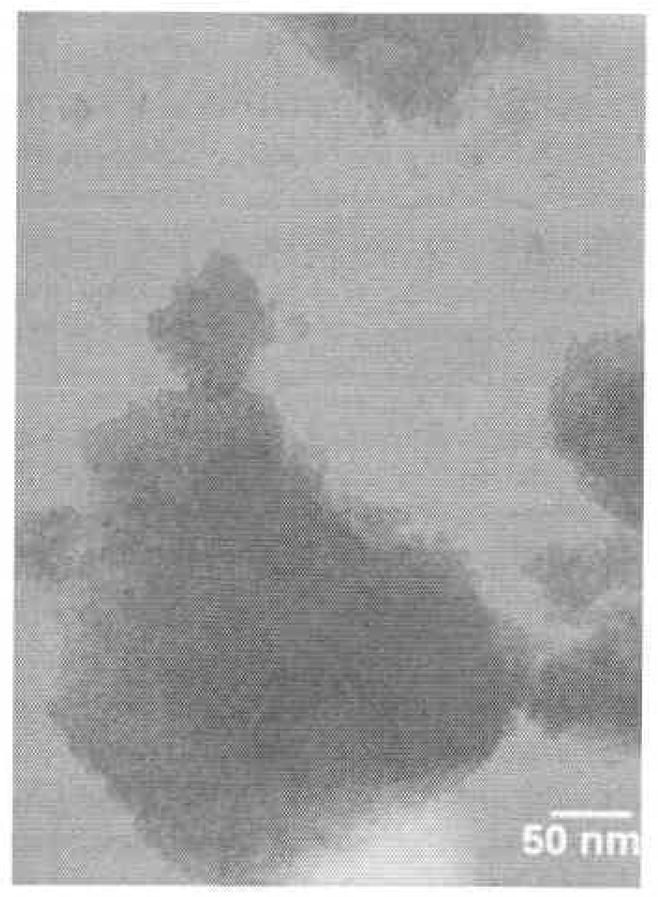
Weaver of Dreams.
Figure 3.
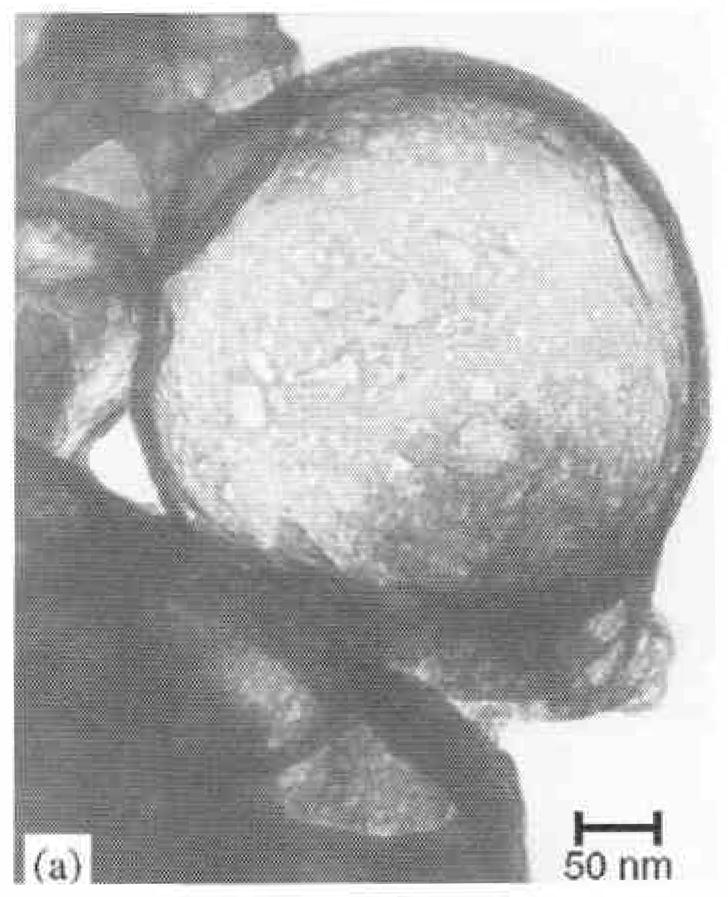
Moon in Your Hands.
Figure 4.
Toffees, Anyone?
Figure 5.
Cheerful Pawn.
Figure 6.

Space Cucumber, Drum, Volcano and Seashell.
Figure 7.
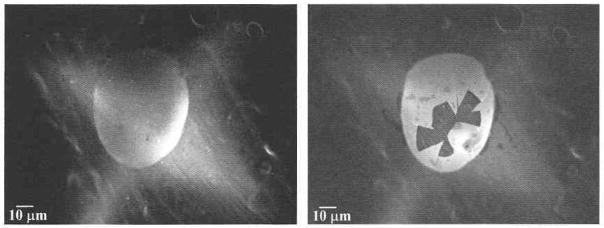
Bursting Egg.
Figure 8.
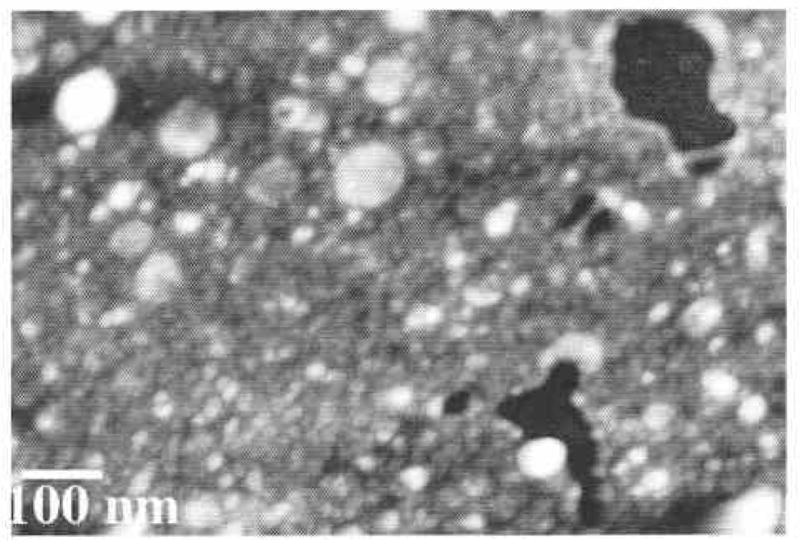
Surfer’s Dream.
Figure 9.
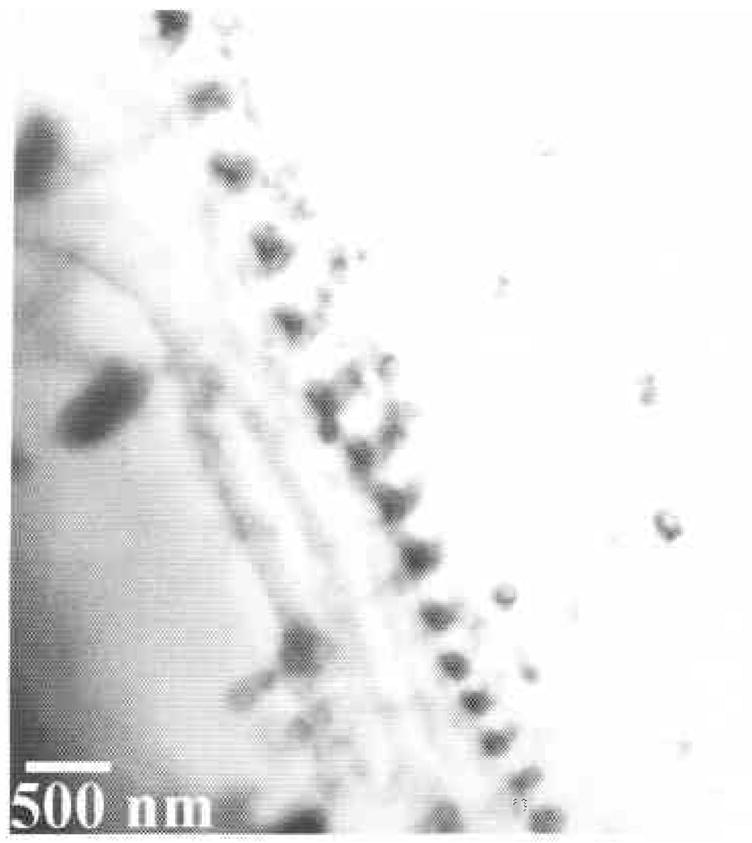
Face Concealed in the Silence of Being.
Figure 10.
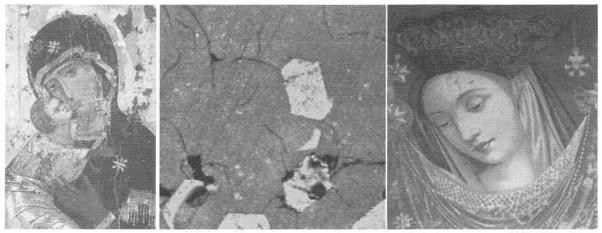
Sleeping Grace.
Figure 11.

Kid A, Sleeping Dog, and Bear and Rabbit in an Enchanting Play.
Figure 12.
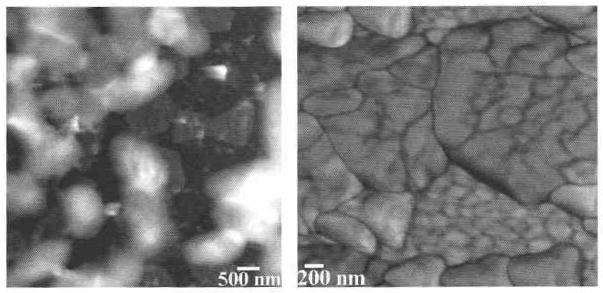
ETs Descending, and Aboriginal Waters.
Figure 13.
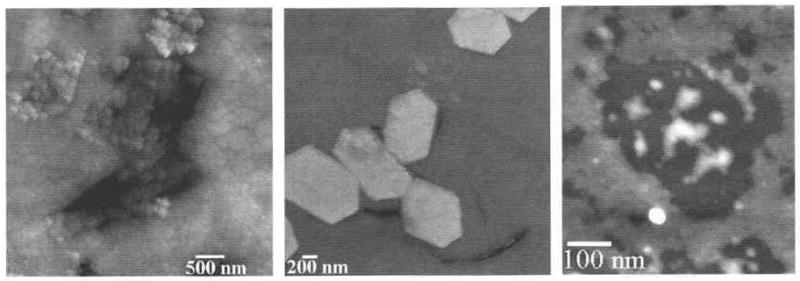
Queen of Sheba, Cracked Smile, and the Devil’s Face.
Figure 14.
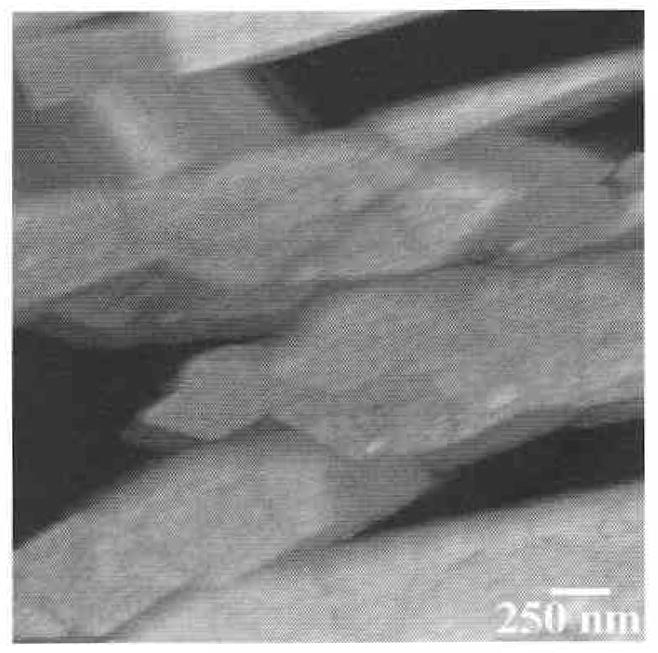
The Lisbon Story (a.k.a. Streaming Towards Happiness).
Acknowledgments
A part of the presented micrographs has been obtained during the research supported by the NSF grant DMR-0509104 and the NIH grant R01-DE017529.
Footnotes
Contributor details
Vuk Uskoković, a native of Belgrade, Serbia, holds degrees in Physical Chemistry, Electrical Engineering and Nanosciences and Nanotechnologies. He is currently at the University of California, San Francisco, where he is involved in the research of bio-mimetic formation of biomineralized tissues. He is a former member of Jožef Stefan Institute, Ljubljana, where he developed methods for the synthesis of magnetic nan-oparticles applicable in the fields of electronics and biomedicine, and of the Center for Advanced Materials Processing of Clarkson University in Potsdam, NY, where he investigated the mechanisms for the precipitation of cholesterol. Besides his dedication to scientific research in the area of physical chemistry, he has published studies in the fields of cognitive science, ecology, philosophy and social science.
References
- Bateson, Gregory. CoEvolution Quarterly. Spring; 1978. Allegory; pp. 44–46. [Google Scholar]
- Dirac Paul. The Evolution of Physicist’s Picture of Nature. Scientific American. 1963;208(5):45–53. [Google Scholar]
- Emerson Ralph Waldo. Nature. New York, NY: Penguin; 2003. [Google Scholar]
- Foerster Heinz von. Understanding Understanding: Essays on Cybernetics and Cognition. New York, NY: Springer; 2002. [Google Scholar]
- Glasersfeld Ernst von. Radical Constructivism: A Way of Knowing and Learning. London, UK: RoutledgeFalmer; 1995. [Google Scholar]
- Heisenberg Werner. Physics and Philosophy. London, UK: George Allen and Unwin; 1959. [Google Scholar]
- Hollingsworth Rogers J. High Cognitive Complexity and the Making of Major Scientific Discoveries. In: Sales A, Fournier M, editors. Knowledge, Communication, and Creativity. London, UK: Sage; 2007. pp. 129–155. [Google Scholar]
- Keats John. Ode on a Grecian Urn and Other Poems. Whitefish, MT: Kessinger Publishing; 2004. p. 34. [Google Scholar]
- Matijević Egon. Science and Art of the Formation of Uniform Solid Particles. In: Bergna Horacio, Roberts William., editors. Colloidal Silica: Fundamentals and Applications. Boca Raton, FL: CRC Press; 2005. pp. 43–46. [Google Scholar]
- Maturana Humberto, Varela Francisco. The Tree of Knowledge: The Biological Roots of Human Understanding. Boston, MA: Shambhala; 1987. [Google Scholar]
- Schuller Gunther. Form and Aesthetics in Twentieth Century Music. In: Curtin DW, editor. The Aesthetic Dimension of Science. New York, NY: Philosophical Library; 1980. [Google Scholar]
- Uskoković Vuk. Morphological Study of Emulsion-Assisted Cholesterol Precipitation Processes. Molecular Crystals and Liquid Crystals. 2007;474:77–88. [Google Scholar]
- Uskoković Vuk. Composites Comprising Cholesterol and Carboxymethyl Cellulose. Colloids and Surfaces B: Biointerfaces. 2008;61:250–261. doi: 10.1016/j.colsurfb.2007.08.014. [DOI] [PubMed] [Google Scholar]
- Uskoković Vuk. Insights into Morphological Nature of Precipitation of Cholesterol. Steroids. 2008a;73:356–369. doi: 10.1016/j.steroids.2007.12.005. [DOI] [PubMed] [Google Scholar]
- Uskoković Vuk. Isn’t Self-Assembly a Misnomer? Multi-Disciplinary Arguments in Favor of Co-Assembly. Advances in Colloid and Interface Science. 2008b;141(1–2):37–47. doi: 10.1016/j.cis.2008.02.004. [DOI] [PubMed] [Google Scholar]
- Uskoković Vuk. Of Sustainability, Elephants and Prefab Sprouts. International Journal of Sustainable Society. 2008c;1(1):85–102. [Google Scholar]
- Uskoković Vuk. Challenges for the Modern Science in its Descend towards Nano Scale. Current Nanoscience. 2009a;5(3):372–389. doi: 10.2174/157341309788921381. [DOI] [PMC free article] [PubMed] [Google Scholar]
- Uskoković Vuk. On Science of Metaphors and the Nature of Systemic Reasoning. World Futures: Journal of General Evolution. 2009b;65:241–269. [Google Scholar]
- Uskoković Vuk. On the Light Doves and Learning on Mistakes. Axiomathes: An International Journal in Ontology and Cognitive Systems. 2009c;19:17–50. [Google Scholar]
- Uskoković Vuk. On the Relational Character of Mind and Nature. Res Cogitans: Journal of Philosophy. 2009d;6(1):286–400. [Google Scholar]
- Uskoković Vuk, Drofenik Miha. Synthesis of Nanocrystalline Nickel-Zinc Ferrites within Reverse Micelles. Materials and Technology. 2003;37(3–4):129–131. [Google Scholar]
- Uskoković Vuk, Drofenik Miha. Synthesis of Lanthanum-Strontium Manganites by Oxalate-Precursor Co-Precipitation Methods in Solution and in Reverse Micellar Microemulsion. Journal of Magnetism and Magnetic Materials. 2006;303(1):214–220. [Google Scholar]
- Uskoković Vuk, Matijević Egon. Uniform Particles of Pure and Silica Coated Cholesterol. Journal of Colloid and Interface Science. 2007;315(2):500–511. doi: 10.1016/j.jcis.2007.07.010. [DOI] [PubMed] [Google Scholar]
- Uskoković Vuk, Drofenik Miha, Ban Irena. The Characterization of Nanosized Nickel-Zinc Ferrites Synthesized within Reverse Micelles of CTAB/1-Hexanol/Water Microemulsion. Journal of Magnetism and Magnetic Materials. 2004;284:294–302. [Google Scholar]
Suggested citation
- Uskoković V. A collection of micrographs: where science and art meet. Technoetic Arts: A Journal of Speculative Research. 2009;7(3):231–247. doi: 10.1386/tear.7.3.231/1. [DOI] [PMC free article] [PubMed] [Google Scholar]



